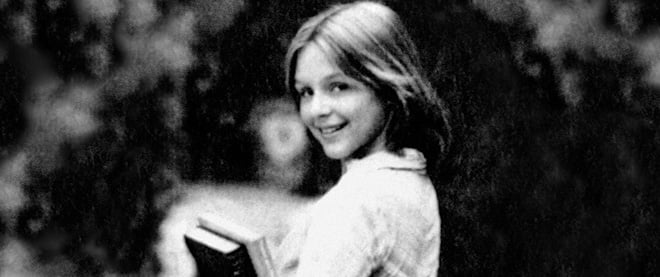The blurred lines of the Polanski case
The girl from the 1977 Roman Polanski rape case refuses to be revictimized
Michael Brennan / Scope Features / Landov
Share

The young girl whose photograph graces the cover of Samantha Geimer’s new memoir doesn’t have a clue about what’s about to happen to her. The year is 1977. She’s 13 years old, living in Los Angeles, dreaming of being an actress. The photographer is Roman Polanski, a 43-year-old director famed for Repulsion, Rosemary’s Baby and Chinatown, who’s a friend of the girl’s sister’s boyfriend. The girl and her mother have been told the shoot is for Vogue Paris. The look on the girl’s face is inscrutable, her stare glazed. A heart dangles from a thin chain around her neck.
That girl is Geimer (then Samantha Gailey). Weeks later, after a second photo shoot, Polanski plied the ninth-grader with wine and Quaaludes, photographed her naked in Jack Nicholson’s Jacuzzi, then pressed her into sexual acts. Her mother, who found out after Polanski drove the girl home, called the police. Polanski was charged with rape.
And that, writes Geimer in The Girl: A Life in the Shadow of Roman Polanski, is when a more grievous assault began: “If I had to choose between reliving the rape or grand jury testimony, I would choose the rape,” she writes. The cross-examination was brutal; the judge called her and her mother a “mother-daughter hooker team.” Polanski, indicted on six counts, was allowed to plead down to “unlawful sexual intercourse” to free Gailey from the media circus. He fled to France, never serving jail time. He lives in exile, continues to be celebrated for his films, and remains the subject of debate as to whether his behaviour should be forgiven due to his “artistic genius.”
Geimer returned to obscurity. She took drugs, drifted and posed nude before settling into a happy marriage and motherhood, though the case shadowed her life. In 1988, she won a $500,000 civil suit against Polanski. In 2009, after the director was arrested in Switzerland and threatened with extradition to the U.S., Geimer, hounded by the press, went public, saying he should be allowed to return; she was condemned as “an apologist,” a term she rejects.
She’s telling her story now, 36 years later, to reclaim her identity as “more than Sex Victim Girl” and redress long-forgotten misconceptions: her mother didn’t pimp her out; the story isn’t black-and-white. It’s a lively read that is ground zero for “rape culture”—the sensationalizing and normalizing of sexual violence as currently witnessed in the Steubenville rape case, in which two football players raped and shot video of a 16-year-old girl, and the frenzied debate over Robin Thicke’s Blurred Lines. On The View, in 2009, Whoopi Goldberg noted what Geimer experienced “wasn’t rape-rape.” Geimer laughed it off, she tells Maclean’s. Back then, she didn’t see it that way either: “I thought rape had to be violent,” she says. “I experienced it as an old guy forcing me to have sex I didn’t want and I didn’t know what to do.” She has since made peace with Polanski. He wrote her, taking full blame, after seeing her in a 2009 documentary about the case.
She knows now she was raped, but observes the ’70s shifting sexual climate blurred lines. Sex occurred between people of different ages without “calculation or malice,” she writes. The sexual allure of young girls was mainstreamed—Jodie Foster in Taxi Driver, Brooke Shields in Pretty Baby; Woody Allen’s Manhattan paid homage to a middle-aged man’s obsession with a high school student. Geimer herself had had sex with her boyfriend.
Now Geimer saves her vitriol for the “victim industry,” represented by Dr. Phil and Nancy Grace, who criticized her as a “weak victim” for defending Polanski. During the Steubenville case, she says she received emails from advocacy groups wanting to broadcast details of what happened to the victim to abet their mission, “with no thought for her as a person.” Geimer, who rejects the “victim” label, wrote the Steubenville victim assuring her that “it will get better.” The experience made her realize “how much worse it must be today,” she says. In such a climate, The Girl, with its photos of Geimer at 13 and its rehashing of her rape, arrives as a paradox, one destined to perpetuate the sensational media frenzy the case began.